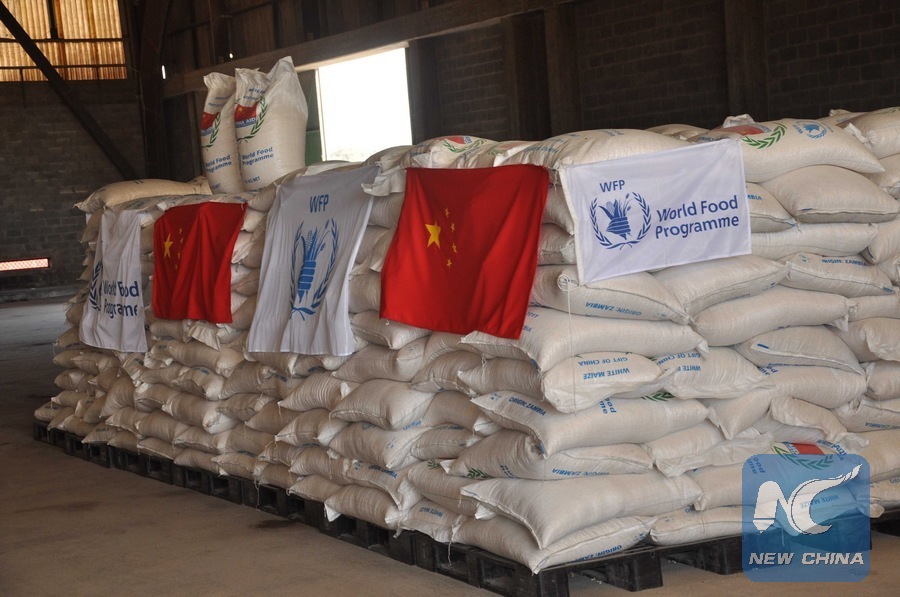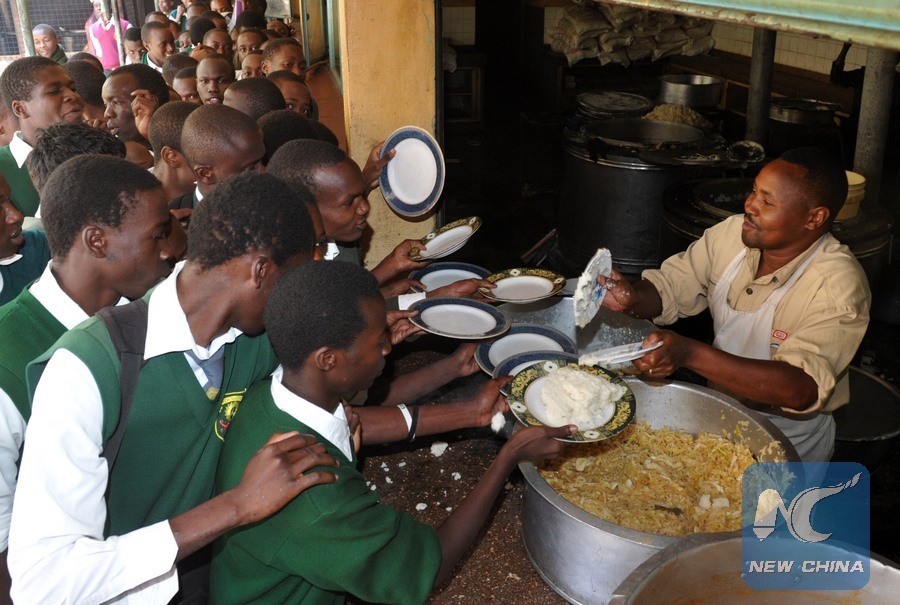
Sacks of maize donated by China are displayed at a warehouse of the United Nations World Food Programme (WFP) in Mogadishu, Somalia, Oct. 12, 2011. Delegations from China and WFP attended a handover ceremony of China's donation to the Somalia humanitarian relief effort, and visited WFP's humanitarian programs in the Somali capital on Wednesday. (Xinhua/Faisal Isse)
NAIROBI, Oct. 16 (Xinhua) -- The UN World Food Programme (WFP) has promised it would feed 600,000 school children in Kenya in 2016.
The world food organization has been conducting the school feeding program for the past 30 years, says WFP Kenya Country Director Annalisa Conte.
Since 2009, Kenya, whose economy has been rapidly expanding for it to fund the program using domestic resources, has also been complementing WFP efforts to fund the school feeding program.

Pupils at Makina Primary School in Kibera slum, Nairobi, capital of Kenya, line up to get their lunch, March 20, 2012. The urban slum school is under a feeding programme by the World Food Program (WFP). The WFP spends USD 16 million annually to feed 630, 000 children in Kenya's urban and semi-arid areas. (Xinhua/Tom Maruko)
According to the WFP, it costs between 0.1 to 0.12 U.S. cents to feed each pupil per day.
The government is currently funding 1 million school children under the Home Grown School Meals Programme (HGSMP).
The program is conducted mainly in arid and semi-arid sub-counties in order to improve access to education in the areas.

A file photo shows students wait for lunch at Jamhuri high shool in Nairobi, Kenya, Oct. 16, 2012.(Xinhua/Ding Haitao)
The school feeding program is an investment for Kenya's future, says Conte. "We have seen that the school meals has increased the school attendance level particularly in areas where poverty and food insecurity still persists."
Kenyan Ministry of Education, Science and Technology Principal Secretary Belio Kipsang says the school feeding program has helped to increase the country's transition rate from primary to secondary education.
"So we are going to gradually increase our funding because of the benefits of the program," Kipsang says.
WFP last year provided school snacks or meals to more than 17 million school children in 62 countries, nourishing their bodies and feeding their dreams.
WFP is the world's largest humanitarian agency fighting hunger worldwide, delivering food assistance in emergencies and working with communities to improve nutrition and build resilience.
Each year,the WFP assists some 80 million people in around 80 countries.

